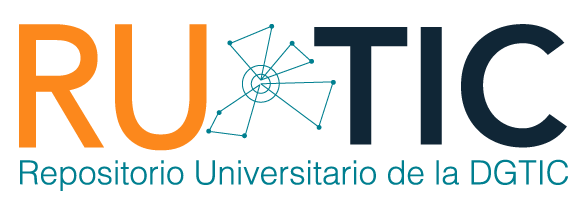| dc.coverage.spatial | MX | |
| dc.date.accessioned | 2018-06-28T05:13:16Z | |
| dc.date.available | 2018-06-28T05:13:16Z | |
| dc.date.issued | 2012-12-01 | |
| dc.identifier.uri | https://ru.tic.unam.mx/handle/123456789/2083 | |
| dc.description | Tema del mes | |
| dc.description.abstract | Por diversos tipos de fuentes, contamos con una variada y rica información sobre los códices. Las excavaciones arqueológicas han mostrado muchos aspectos sobre sus poseedores; las imágenes pintadas en cerámica dan cuenta de la apariencia y el uso que tenían; los autores indígenas, españoles y mestizos de la época colonial nos informan, empleando ya caracteres latinos, sobre su uso, su contenido y su aspecto. Pero toda esta información adquiere su justa dimensión cuando se estudian los únicos tres ejemplares, incompletos, que hoy se conservan en Europa: los códices de París, Dresde y Madrid. Estos bellísimos libros, testimonian a la vez el fin de la civilización maya y el inicio de los modernos estudios mayas. Su contenido, comprendido en tiempos prehispánicos sólo por el sacerdocio, hoy llama poderosamente la atención tanto de especialistas como de neófitos. Si bien los nombres de los grandes mayistas están estrechamente vinculados con los de los códices, por otro lado los autores paracientíficos afirman la existencia de importantes datos en los códices mayas, con lo que pretenden darle validez a alguna de sus afirmaciones. | es_MX |
| dc.description.abstract | On different types of sources, we have a rich and varied information on the maya codex. Archaeological excavations have shown many aspects of their owners, the images painted on ceramic realize appearance and the use they had, the authors Indians and mestizos of Spanish colonial inform us, using Latin characters, on their use, its content and appearance. But all this information takes on its proper perspective when studying the only three specimens, incomplete, preserved today in Europe: Paris, Dresden and Madrid codex. These beautiful books, both testify the end of the Mayan civilization and the beginning of modern Maya studies. Its contents, understood in ancient times only for the priesthood, today calls attention both specialists and neophytes. While the big names Mayanists are closely linked to the codices, second parascientists authors claim the existence of important data in the Maya codices, which claim to give validity to any of his claims. | en |
| dc.format | html | |
| dc.format | application/pdf | |
| dc.format.extent | 1.6 MB | |
| dc.format.extent | 916 KB | |
| dc.language | spa | |
| dc.publisher | Universidad Nacional Autónoma de México. Dirección General de Cómputo y de Tecnologías de Información y Comunicación. Revista Digital Universitaria | |
| dc.relation.isformatof | http://www.revista.unam.mx/vol.13/num12/art115/art115.pdf | |
| dc.relation.ispartof | http://www.revista.unam.mx/index_dic12.html | |
| dc.rights | openAccess | |
| dc.source | Revista Digital Universitaria (1607 - 6079). Vol. 13, No. 12 (2012) | |
| dc.subject | Manuscritos mayas | |
| dc.title | Los códices mayas prehispánicos en la era digital | es_MX |
| dc.title.alternative | Prehispanic mayan codex in the digital age | en |
| dc.type | article | en |
| dc.subject.keywords | Códice Dresde, Códice Madrid, Códice París, Escribas Mayas, Profesías mayas, Dresde Codex, Madrid Codex, Paris Codex, Mayan scribes, Mayan prophecies | |
| dc.identifier.url | http://www.revista.unam.mx/vol.13/num12/art115/ | |
| dc.creator | LAURA ELENA SOTELO SANTOS | |
| dc.rights.url | http://creativecommons.org/licenses/by-nc-sa/4.0 |
Files in this item
This item appears in the following Collection(s)
COMPARTE
BÚSQUEDA
Escriba el texto a buscar en DSpace
CONTACTO
El Repositorio Universitario de la DGTIC se edita en la Dirección General de Cómputo y
de Tecnologías de Información y Comunicación (DGTIC), de la Universidad Nacional Autónoma de México (UNAM)
Circuito Exterior s/n, Ciudad Universitaria, Coyoacán, C.P. 04510, México, D.F
Tel: +(52) (55) 56228166 Email: rutic@unam.mx









 ¿Qué es un repositorio...?
¿Qué es un repositorio...? ¿Qué beneficios obtengo...?
¿Qué beneficios obtengo...? ¿Qué tipo de recursos...?
¿Qué tipo de recursos...? Preguntas frecuentes
Preguntas frecuentes